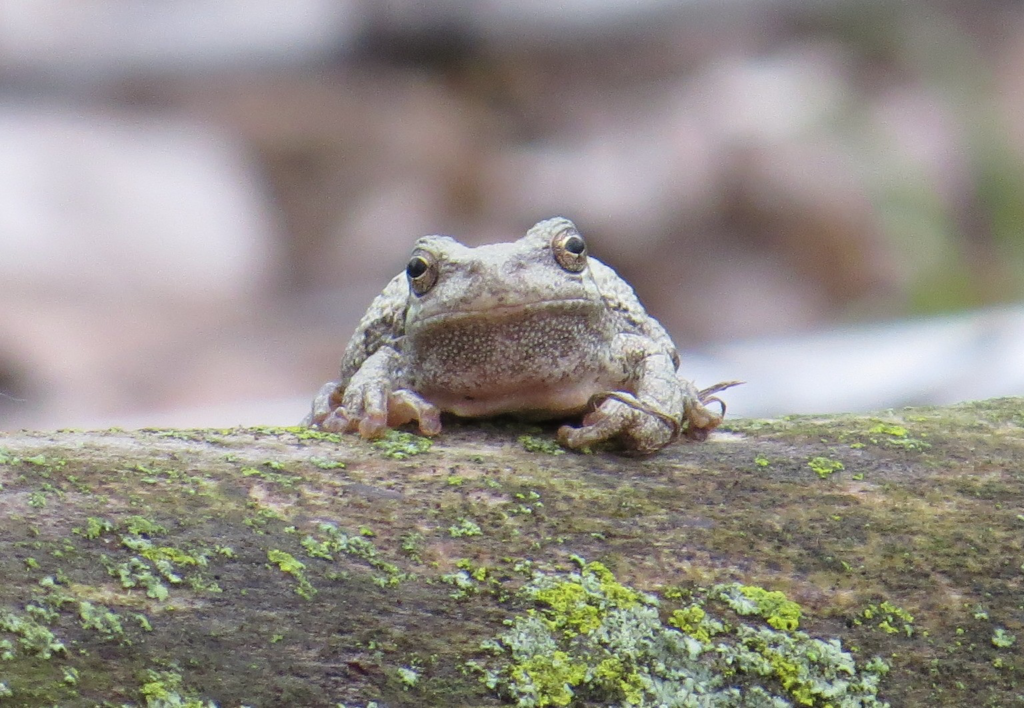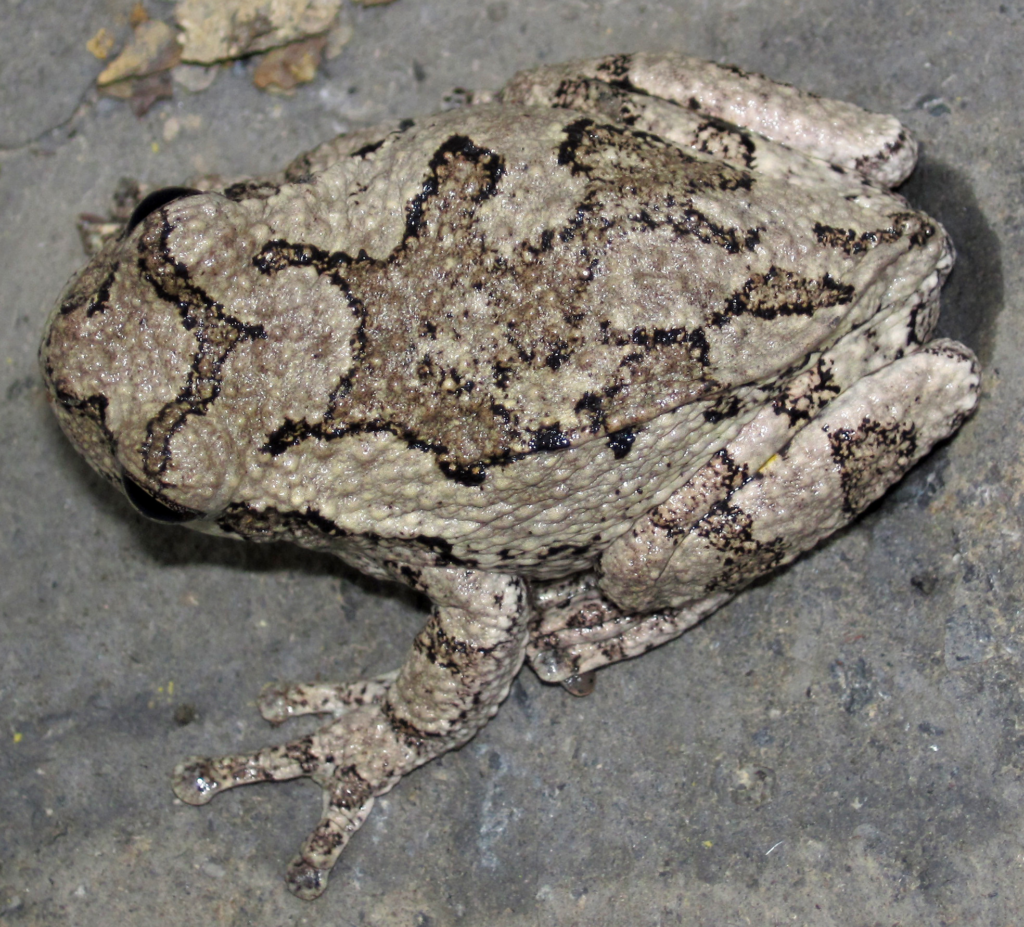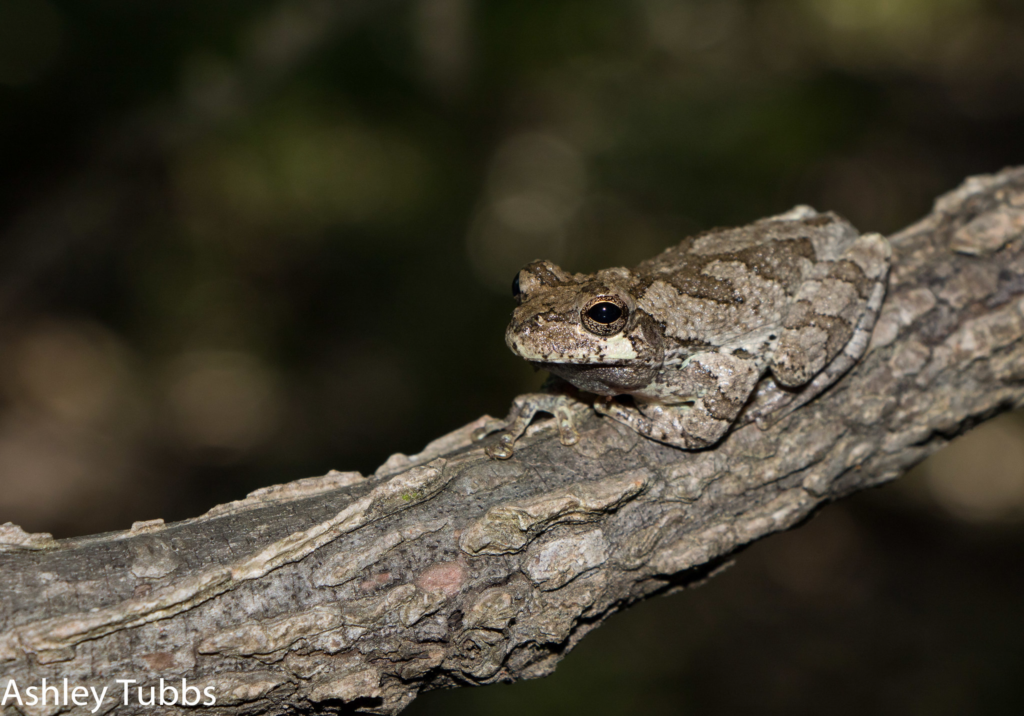Welcome to Creature Feature, a weekly series from the CELT education team highlighting local wildlife. Each week, we will share a short introduction to a local organism that you might encounter in your backyard or on our trails.
On warm evenings in June we are often serenaded by the song of the gray treefrog (Dryophytes versicolor). People often mistake this melodious trill with that of a bird, but make no mistake: these little frogs are no birds, and they are busy talking with each other and trying to find a mate.
Gray treefrogs are a common type of frog and have a wide range spanning most of Maine as well as other parts of the U.S. Gray treefrogs spend much of the day sleeping on tree branches or leaves. They are commonly discovered around houses surrounded by wet woodland areas, and can even be found in potted plants!

Being part of the tree frog family, grey treefrogs have sticky pads on their toes which help them when climbing and jumping and also allows them to easily climb vertically up windows. I once came home to find a grey treefrog on the door knob!

As an amphibian, gray treefrogs need to keep their skin moist all the time — otherwise, oxygen can’t pass through, and it will suffocate. Frog skin secretes a mucus that helps to keep it moist, but for this reason they usually stay near bodies of water.
Gray treefrogs can change color! The gray treefrog’s color changes in response to its environment and activities, and can range from green to gray or brown. The upper surface of its body also has a blotchy pattern that resembles lichen, which helps it camouflage in the trees. Although the pattern varies, it usually features two dark central patches, which can be green, buff, or gray.

Gray treefrogs are nocturnal and will feed on insects during the night. They have to be careful of a variety of birds, snakes, small mammals, and even other frogs who all are predators of the Grey Treefrog and would like to make meal of them.
Now you will know who is making that beautiful trill when you enjoy the June evening choirs of the gray treefrog!
Activity Ideas:
Pick a warm evening and head over to one of CELT’s preserves like Hobstone, Great Pond, or Robinson woods. Anywhere you can find a pond or vernal pool should be a good spot to stop and see how many different frog calls you can hear!
Where to Learn More about Maine’s Frogs:
- Frog calls of Maine from FrogWatch USA: https://www.aza.org/frogwatch-usa-maine
- The Frogs of Maine’s Vernal Pools from Of Pools and People: http://www.vernalpools.me/the-frogs-of-maines-vernal-pools/
—BY LISA GENT, CELT EDUCATION COMMITTEE CHAIR
